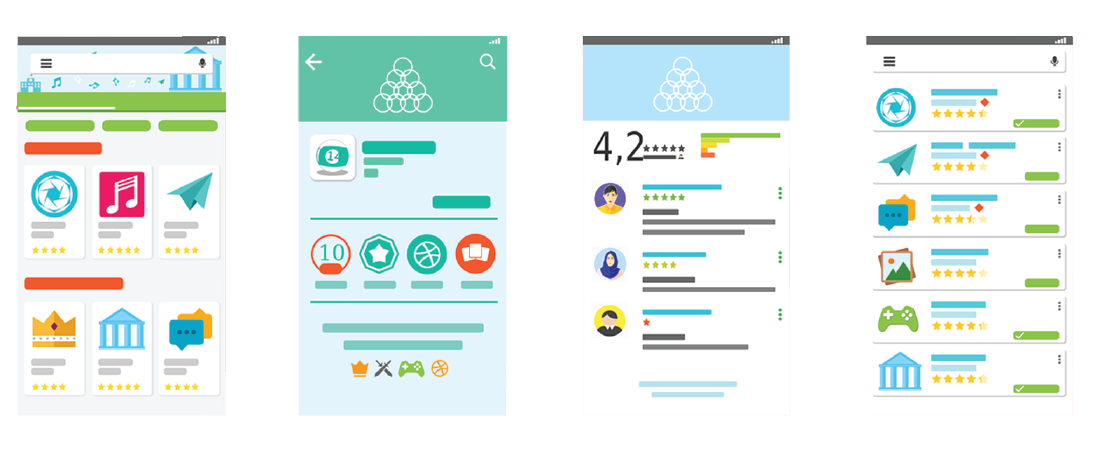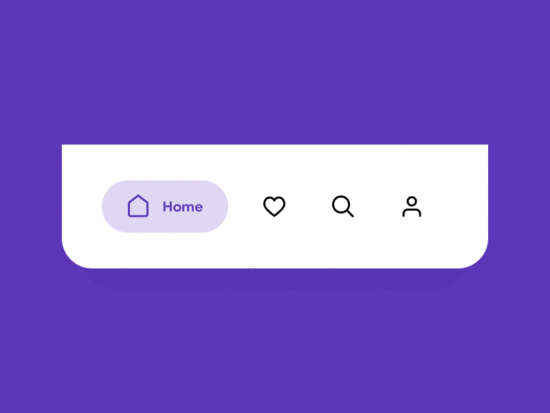As of 2017, there are approximately 2.8 million apps in Google Play and 2.2 million apps in the Apple App Store. The number of apps available is overwhelming and quite honestly, amazing! Of all the apps available, only some of them are downloaded, but that doesn’t mean they stay on users phones. Acquisition does not necessarily mean retention. Gaining exposure and popularity in the app marketplace is a challenge. A well-structured mobile app architecture will bring your app one step closer to the Top Charts in app stores.
What is mobile app architecture
In its most basic form, mobile app architecture is a set of patterns and techniques which developers follow to build a fully structured mobile application. The particular elements of the architecture are chosen based on the application features and requirements.
The following three layers must be considered when developing a mobile app architecture:
Presentation/View Layer
This layer comprises UI components and UI process components. When discussing this layer, the development team should define how the mobile app will present itself in front of the end user. Things like themes, fonts, colors, etc. should also be decided at this stage.

Navigation Layer
This layer includes the processes required for users to switch between the different views within the app and how data will flow between views. The design team will also need to decide which navigation method to incorporate. There’s more on that below.
Services Layer
This layer is formed by data access components, server communication, logic, and storage. It defines a common set of application operations and it’s designed to be reused throughout the app.
Elements to consider
There are as many as 60 thousand mobile apps added to the App Store each month and a large majority of them fail because of poorly designed architecture. Using the correct architectural foundation for your app enables its features to work flawlessly. Architecting an app for maintainability and performance can be quite a challenge. All of your architectural decisions will have lasting consequences. Here are a few specific things that shouldn’t be overlooked.
Bandwidth
Connectivity may be slow sometimes or simply not available so you should architect your app with all network scenarios in mind. An app that doesn’t load is sure to frustrate users and lead to a poor user experience. Design your app to cache its data and state so that it can adjust to intermittent or slow internet connections.
Real-Time Updates vs Notifications
When deciding upon the correct architecture for your app, ask yourself if your users will need real-time updates, or if your data is less dynamic and could be served by push notifications. Real-time updates can be a compelling feature, but they are expensive to build and will use much more of your user’s precious battery life and data.

Navigation Options
There are multiple ways to navigate an app, choosing the right one will heavily influence the user experience. Navigation is a critical aspect which requires expertise in both frontend and backend development. Some of the most popular navigation methods are as follows:
- Single view
- Scroll view
- Stacked navigation bar
- Gesture-based
- Tab controller
- Search driven
-
Understanding your app requirements and your customers should determine which navigation method you choose.
Define User Interface
Keep things simple. You may be tempted to pour out all your creativity into the user interface, but a confusing UI can lead to the failure of your mobile app. Users should be able to seamlessly interact with your app.
Thanks for reading!
If you’d like to learn more about tech and the latest trends, check out our other posts. To inquire about any custom application design or development, please contact us.